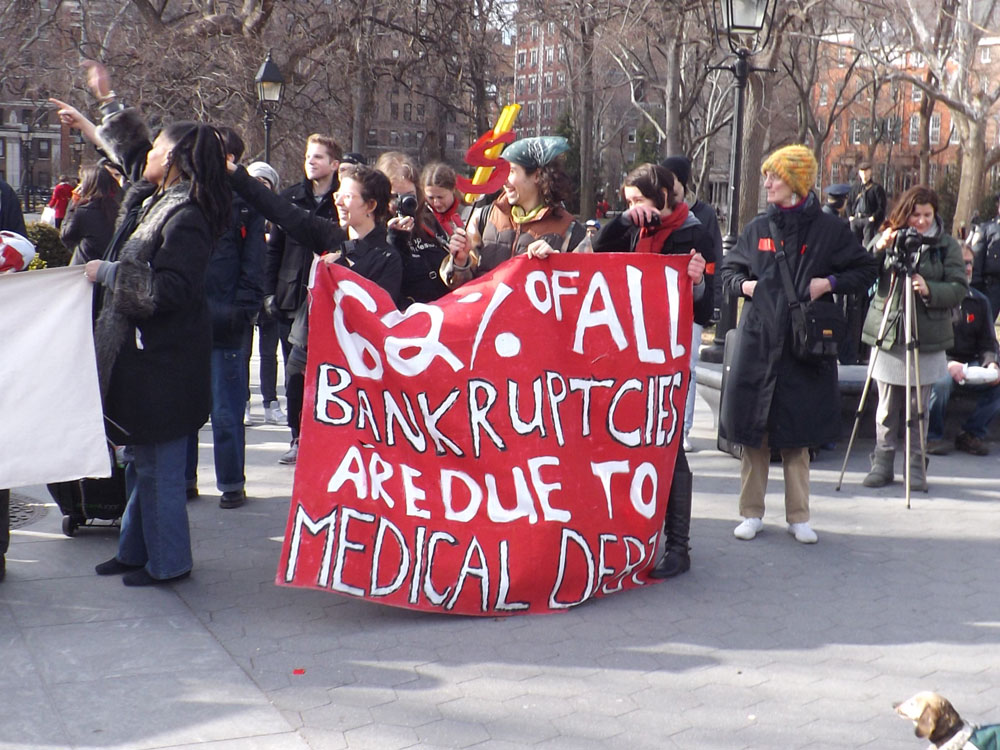October 1, 2011; Source: New York Times | Two weeks ago, in New York City, a handful of young adults began camping out on a small private park near Wall Street and the New York Stock Exchange. Their goal seemed quixotic at the time: occupy and hold the park as a way to draw attention to economic inequality and an economy that seems to be working fairly well for bankers and traders but not so well for workers or heavily-indebted students.
Initially, most observers scoffed, and even fewer actually noticed. “What are their demands? Who is their leader?” No one seemed to know (and the answers to both questions are still unresolved). But slowly, gradually, the group in the park got bigger. The alternative media began to cover it, and progressive blogger Glenn Greenwald blasted the critics, urging them to join the protest if they thought they knew how it should be done:
For those who believe that protests are only worthwhile if they translate into quantifiable impact: the lack of organizational sophistication or messaging efficacy on the part of the Wall Street protest is a reason to support it and get involved in it, not turn one’s nose up at it and join in the media demonization. That’s what one actually sympathetic to its messaging (rather than pretending to be in order more effectively to discredit it) would do. Anyone who looks at mostly young citizens marching in the street protesting the corruption of Wall Street and the harm it spawns, and decides that what is warranted is mockery and scorn rather than support, is either not seeing things clearly or is motivated by objectives other than the ones being presented.
Sign up for our free newsletters
Subscribe to NPQ's newsletters to have our top stories delivered directly to your inbox.
By signing up, you agree to our privacy policy and terms of use, and to receive messages from NPQ and our partners.
Last Tuesday, Occupy Wall Street came to Boston. On Friday, they began their encampment at the southern end of the Rose Kennedy Greenway, a patch of grass near Boston’s financial district and the headquarters of the Boston Federal Reserve Bank. Similar “occupations” sprang up in Los Angeles, Chicago, and dozens of other cities around the country.
Then, on Saturday October 1, a large contingent of New York protesters decided to march across the Brooklyn Bridge. What happened next is unclear. The police say that the marchers disobeyed orders to stay off of the roadway. But many of the marchers say that they heard no such warnings, there were no physical barriers, and the police walked alongside them on the road until they were partway across the bridge before beginning the mass arrests.
Whatever the truth of the situation, the sheer size of the arrests landed the story in the mainstream media, inspiring even more occupations around the country. At this point it remains to be seen what effect if any this occupation tactic will have. We at NPQ are particularly interested in the organizational, logistical, and fundraising aspects of this movement. We have made contact with several of the organizers in Boston and will be bringing you more details and information on those facets of the story in the coming days.—Chris Hartman










